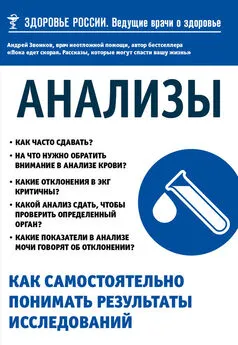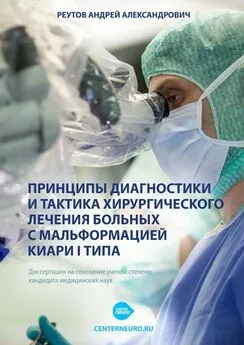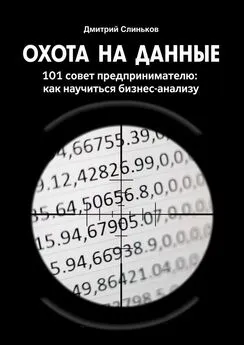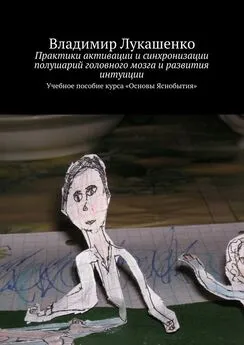Дмитрий Окишев - Хирургическое лечение каверном полушарий большого мозга. Анализ ближайших и отдаленных результатов лечения
- Название:Хирургическое лечение каверном полушарий большого мозга. Анализ ближайших и отдаленных результатов лечения
- Автор:
- Жанр:
- Издательство:неизвестно
- Год:2016
- ISBN:978-5-4483-3412-2
- Рейтинг:
- Избранное:Добавить в избранное
-
Отзывы:
-
Ваша оценка:
Дмитрий Окишев - Хирургическое лечение каверном полушарий большого мозга. Анализ ближайших и отдаленных результатов лечения краткое содержание
Хирургическое лечение каверном полушарий большого мозга. Анализ ближайших и отдаленных результатов лечения - читать онлайн бесплатно ознакомительный отрывок
Интервал:
Закладка:
117. Strenger V., Sovinz P., Lackner H et al. Intracerebral cavernous hemangioma after cranial irradiation in childhood. Incidence and risk factors. Strahlenther Onkol. 2008 May; 184 (5): 276—80.
118. Sugano H., Shimizu H., Sunaga S. Efficacy of intraoperative electrocorticography for assessing seizure outcomes in intractable epilepsy patients with temporal-lobe-mass lesions. Seizure. 2007 Mar;16 (2):120—7. Epub 2006 Dec 8.
119. Sure U., Butz N., Schlegel J. et al. Endothelial proliferation, neoangiogenesis, and potential de novo generation of cerebrovascular malformations. J Neurosurg 94: 972—977, 2001.
120. Thickbroom G. W., Byrnes M. L., Morris I. T. et al. Functional MRI near vascular anomalies: comparison of cavernoma and arteriovenous malformation. J Clin Neurosci. 2004 Nov; 11 (8): 845—8.
121. Thomas B., Somasundaram S., Thamburaj K., Kesavadas C., Gupta A. K., Bodhey N. K. et al. Clinical applications of susceptibility weighted MR imaging of the brain: a pictorial review. Neuroradiol 2008; 50: 105—16.
122. Tirakotai W., Sure U., Benes L. Image-guided transsylvian, transinsular approach for insular cavernous angiomas. Neurosurgery. 2003 Dec 53 (6): 1299—304; discussion 1304—5.
123. UK-TIA Study Group: The UK-TIA aspirin trial: Interim results. Br Med J 296: 316—20, 1988.
124. Van Gompel J. J., Rubio J., Cascino G. D. et al. Electrocorticography-guided resection of temporal cavernoma: is electrocorticography warranted and does it alter the surgical approach? J Neurosurg. 2009 Jun; 110 (6): 1179—85.
125. Vaquero J., Leunda G., Martínez R., Bravo G. Cavernomas of the brain. Neurosurgery 12: 208—210, 1983.
126. Viale G. L., Castellani P., Dorcaratto A. et al. Occurrence of a glioblastoma-associated tenascin-C isoform in cerebral cavernomas and neighboring vessels. Neurosurgery 50: 838—842, 2002.
127. Virchov R. Die krankhaften Geschwulste. — Berlin, 1863. — 3. — S. 306—496.
128. Voigt K., Yaşargil M. G. Cerebral cavernous haemangiomas or cavernomas. Incidence, pathology, localization, diagnosis, clinical features and treatment. Review of the literature and report of an unusual case. Neurochirurgia (Stuttg) 19: 59—68, 1976.
129. Von Essen C., Rydenhag B., Nystrom B. et al. High levels of glycine and serine as a cause of the seizure symptoms of cavernous angiomas? J Neurochem 67: 260—264, 1996.
130. Wang C. C., Liu A., Zhang J. T., Sun B., Zhao Y. L. Surgical management of brain-stem cavernous malformations: report of 137 cases. Surg Neurol 59: 444—454, 2003.
131. Washington C. W., McCoy K. E., Zipfel G. J. Update on the natural history of cavernous malformations and factors predicting aggressive clinical presentation. Neurosurg Focus. 2010 Sep; 29 (3): E7.
132. Weber M., Vespignani H., Bracard S. et al. Angiome caverneux intracerebral. Rev Neurol (Paris) 145: 429—436, 1989.
133. Wester K., Kråkenes J. Vertical displacement of the brain and the target area during open stereotaxic neurosurgery Acta Neurochir (Wien). 2001; 143 (6): 603—6.
134. Willmore L. J., Sypert G. W., Munson J. V., Hurd R. W. Chronic focal epileptiform discharges induced by injections of iron into rat and cat cortex. Science 200: 1501—1503, 1978.
135. Wurm G., Schnizer M., Fellner F. A. Cerebral cavernous malformations associated with venous anomalies: surgical considerations. Neurosurgery. 2007 Jul; 61 (1 Suppl): 390—404; discussion 404—6.
136. Wurm G., Schnizer M., Fellner F. A. Cerebral cavernous malformations associated with venous anomalies: surgical considerations. Neurosurgery. 2005 Jul; 57 (1 Suppl): 42—58; discussion 42—58.
137. Yasagril M. Microneurosurgery / III-A Clinical considerations and microsurgery of the arteriovenous racemose angiomas. — Stuttgart; N. Y., 1987.
138. Zabramski J. M., Wascher T. M., Spetzler R. F. et al. The natural history of familial cavernous malformations: results of an ongoing study. J Neurosurg. — 1994 Mar; 80 (3): 422—32.
139. Zevgaridis D., van Velthoven, Ebeling U., Reulen H. J. Seizure control following surgery in supratentorial cavernous malformations: a retrospective study in 77 patients. Acta Neurochir (Wien) 138: 672—677, 1996.
140. Zhao Y., Mao Y., Zhou L. F., Zhang Y. L. Immunohistochemical study on central nervous system cavernous hemangiomas. Zhonghua Yi Xue Za Zhi 83: 544—547, 2003 (Chi).
141. Zhou H., Miller D., Schulte D. M. et al. Transsulcal approach supported by navigation-guided neurophysiological monitoring for resection of paracentral cavernomas. Clin Neurol Neurosurg. 2009 Jan; 111 (1): 69—78. Epub 2008. Nov 20.
Приложение
Интервал:
Закладка:










